This is a great Tilly design that has held up very well to modern technology. In recent years the greens were expanded back to original sizes and where possible new tees were built to lengthen holes. As someone stated earler, Ken Dye did a fine job of rebuilding the bunkers. Though it may look treed, there have been hundreds of trees removed--obviously, more removal would be wonderful. One professional used to call this course "Old Oaks and a million pines", now there are only about half a million. The pictures do not show the extent of slope on the greens--extremely severe on some holes.
Got to love the protection pines for the opening drive


This is a backward view of the tee shot on #2 which drops a good 75-100 feet.

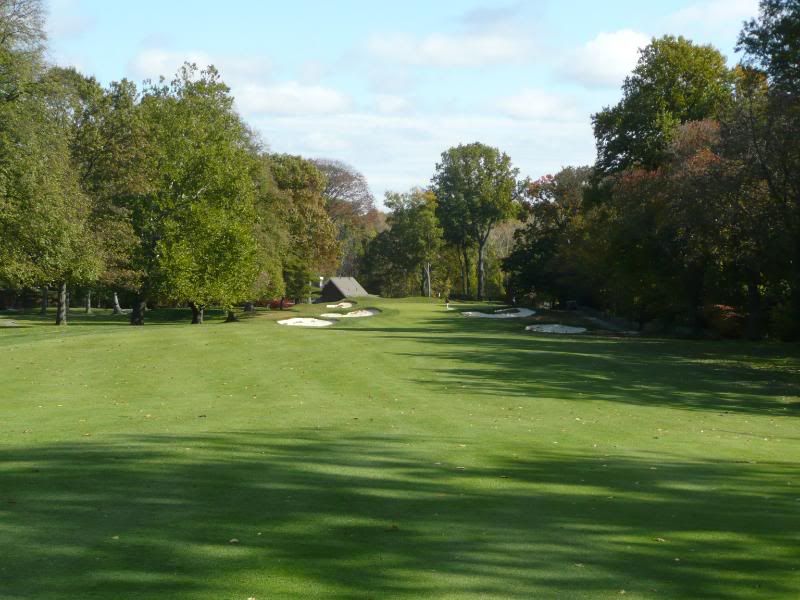
A wonderful view from the 3rd tee of the best halfway house in metroNY and of the drop shot par 3.


The 4th is a 380ish uphill with a fiendishly severe green. There are 3 or 4 pin positions in the front that are about 2degrees of slope amidst about a 4 degree slope. Putting off the green from above is very common.
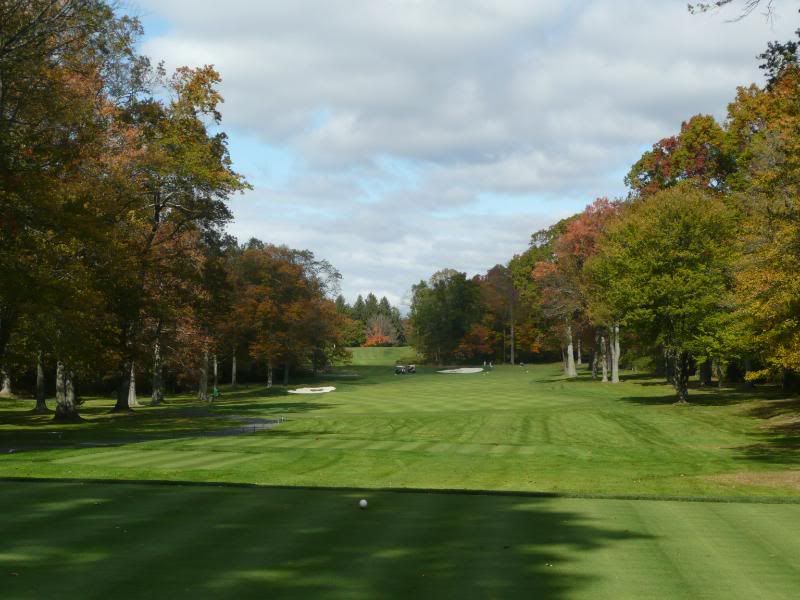
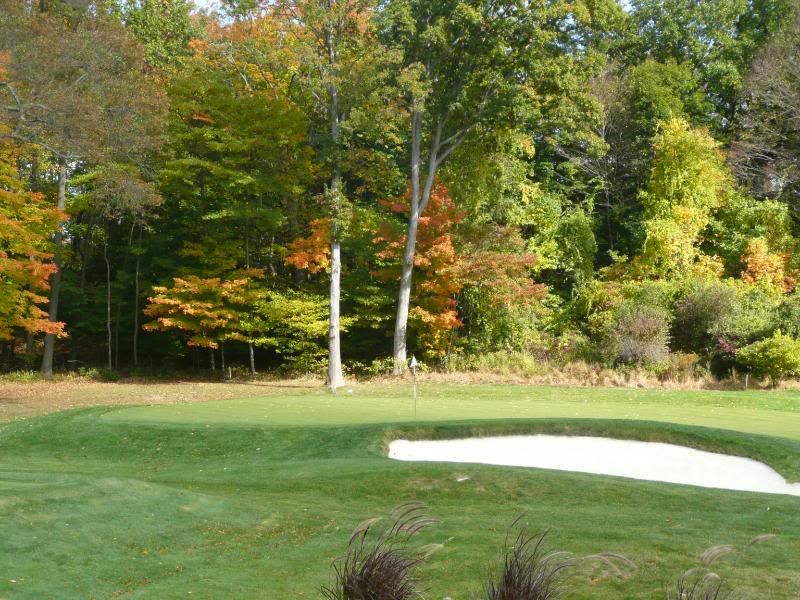
The 5th is a brute of a hole. After the blind drive to a right to left sloping fairway, the apporach is uphill to another very severe green. Above the hole usually results in a long comeback putt. Being in the bunker on the longside is not a bad position even though it looks difficult from the fairway. Both sides of the green slope to the middle.


The 6th is downhill and then back uphill. The pond ends at about 235 from the tee.


The 7th is another tough par 3 accentuated by oak trouble in addition to a well guarded severe green.

The 8th is straight uphill (at least 75 feet) to another severe two tiered green. In the '93 Open Q, I saw a player in front lipout from short distance and roll down the tier and off the green 20yards.
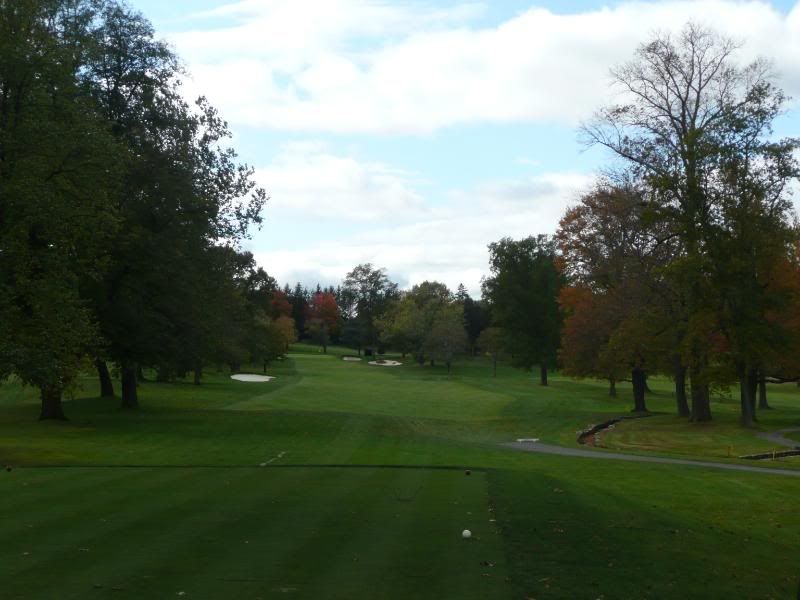
The 9th is back down the hill from the 8th, but is a tough driving hole to a well protected green. The fairway bunker tends to see a lot of play from bailouts away from the small stream.
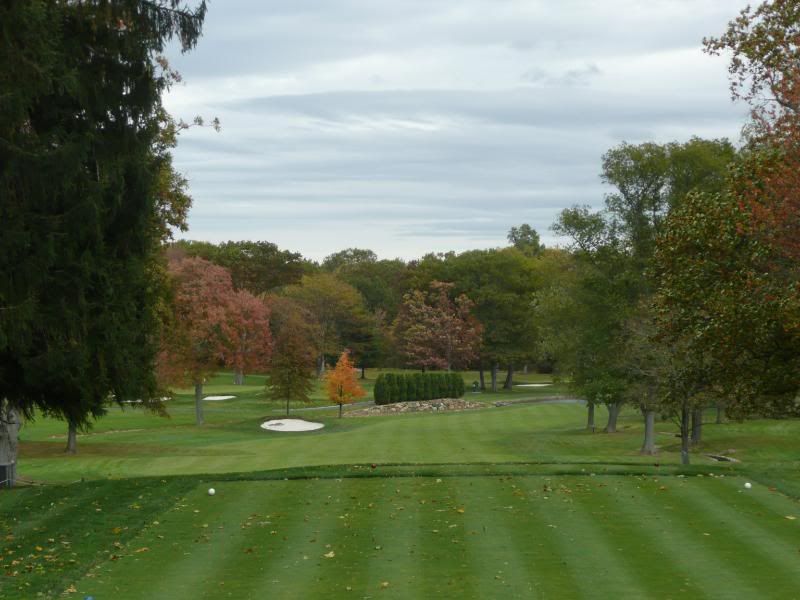


No hole needs more tree clearance than the 10th. The play off the tee is a literal slice of 20-30 yards into a fairway that slopes from right to left. This is another very severe green with quite a few flat areas.


The 11th is drivable for the really long hitters, but a miss to the right is impossible to keep on the green. The green slopes severely away from the bunker and back to front. This is another hole that could use some tree clearance!

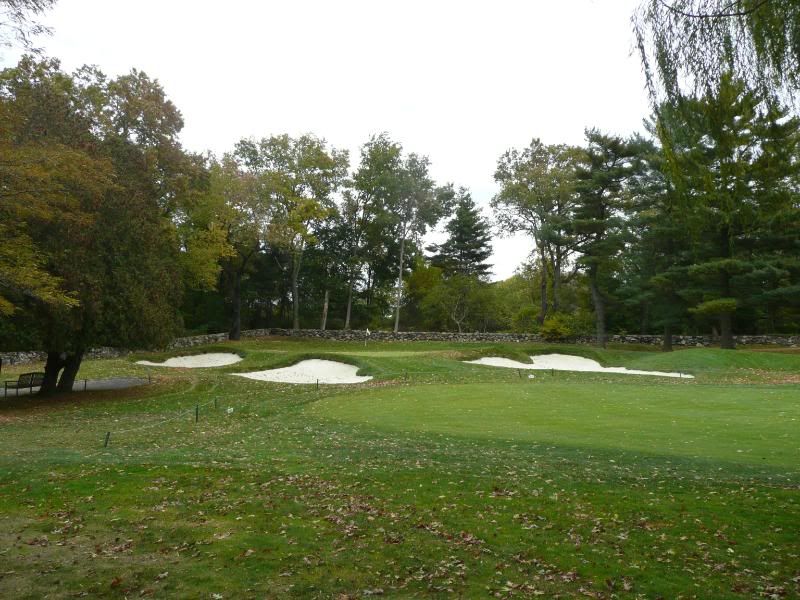
The 12th is one of the most difficult par 3's in Westchester. It is 220 uphill about 30 feet to another severe right to left back to front with some shelves green.

The 13th is downhill with a small stream crossing the fairway at 295 yards. This green was a beyond severe postage stamp in the 1990's, but was expanded to include some great pins on the left.


The 14th is a very tight drive. The green is not too severe, but is gentally compartmentalized.

The 15th is another blind drive needing a slight draw. The fairway angles accross the sslope to the left. This is a must hit the fairway in order to hold the green hole. A miss short is managable--long will require very deft touch.


The 16th had the front portion of the green restored a few years ago. Anything above the front is a putt off the green. Anything to the right of the left pins will be an extremely difficult putt to get within 3feet of the hole.


The 17th is about as tough as a par 4 can play. This green has a 30 foot false front. The hole plays at least 75 feet uphill at 450 from the back tee. A couple of years ago they put the pin just past the false front and people putted down the hill 40 yards. As you can see, it has always been protected by OB very close to the green. The pine trees are on the edge of the property and the picture was shot from the right edge of the fairway.


The course ends with an uphill 550 yard hole. The green was rebuilt because there were only a couple places where the slope was less than 4 degrees.

